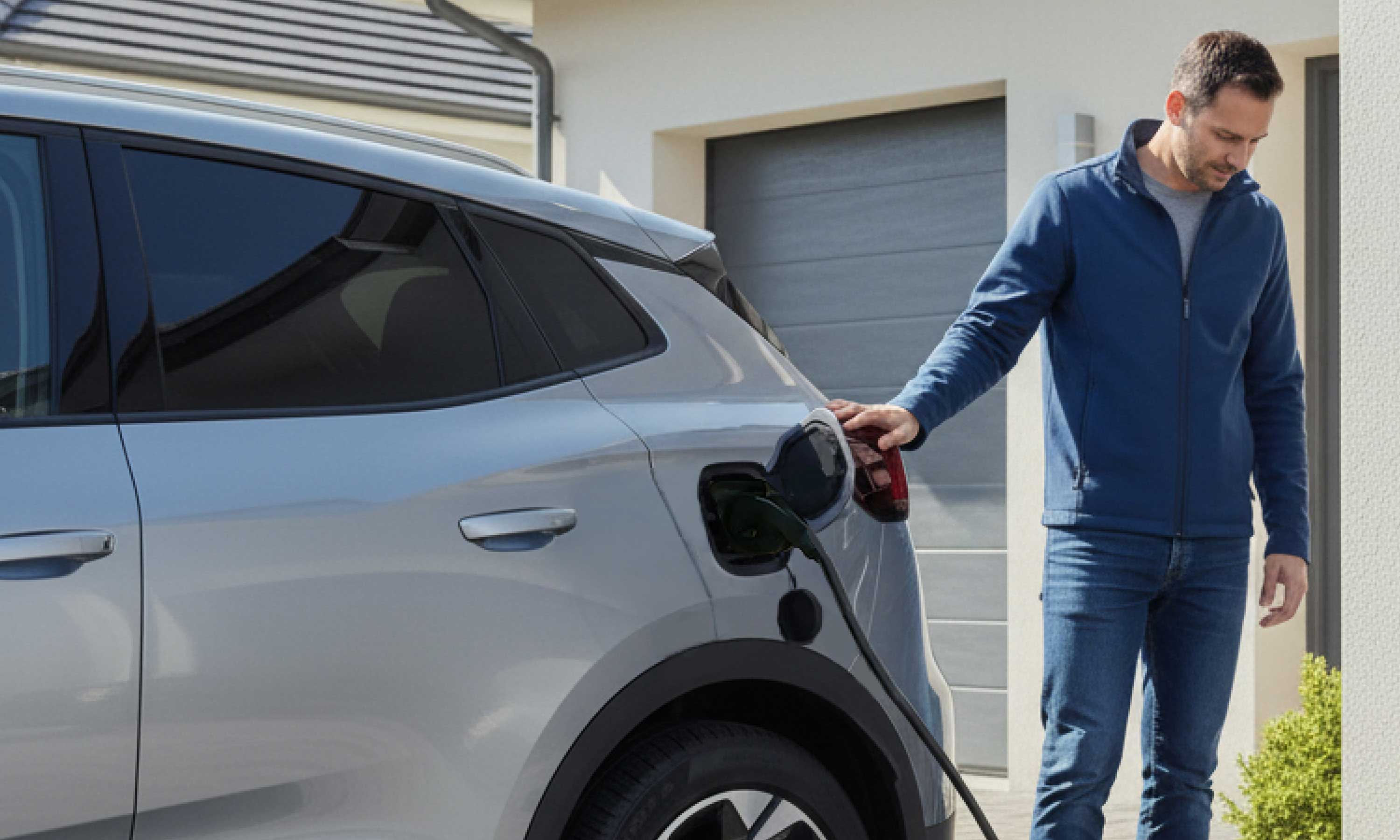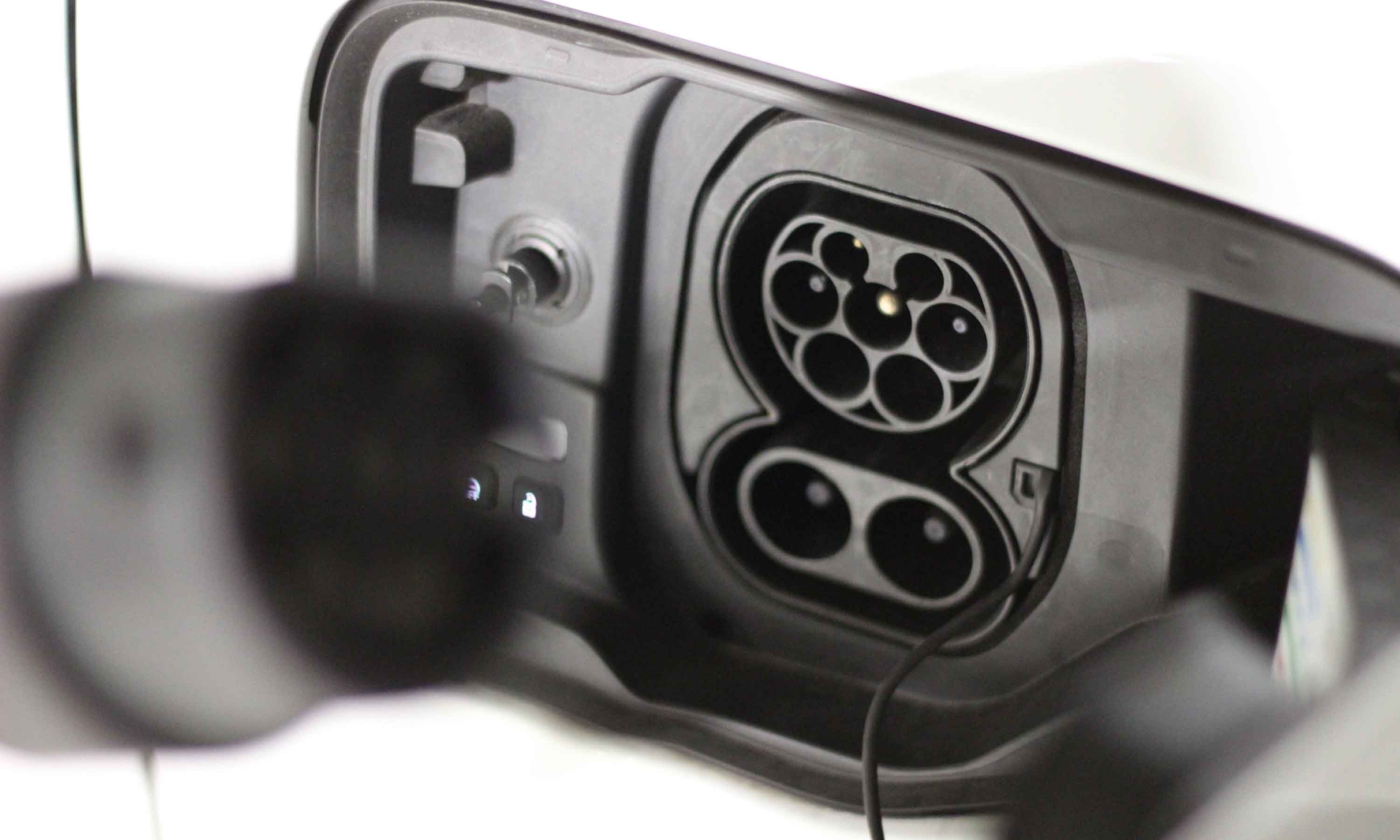The bidirectional charging station is a solution that allows you to recharge an electric vehicle, but also to inject energy stored in the vehicle into the power grid or home. This technology transforms vehicles into real rolling batteries.
Currently, there is only one AC option on the French market for bidirectional home charging. There are still too many constraints to make the solution accessible.
What is a bidirectional charging station?

A bidirectional charging station allows electricity to flow in both directions. Charging is possible from the grid to the vehicle, like a traditional charging station, but also from the vehicle to the grid or home. This technology is based on several concepts:
-
Vehicle-to-Grid (V2G): electricity stored in the vehicle's battery is injected into the public electricity grid.
-
Vehicle-to-Home (V2H): the energy from the car directly supplies a home (not currently authorized in France).
-
Vehicle-to-Building (V2B): similar to V2H, but intended for a larger building (company, school, etc.).
👉 Unlike a charging station classic, the bidirectional terminal allows a real exchange of energy, which opens up new perspectives in terms of energy management.
How does a bidirectional charging station work?
The operation of a bidirectional charging station is based on several key components:
-
A bidirectional inverter: It converts direct current (DC) from the vehicle battery into alternating current (AC) for the grid or home, and vice versa.
-
Dynamic power management : it manages energy flows intelligently and securely.
-
A connection to the smart grid: this allows for optimized management based on electricity needs and prices.
💡 Good to know: The smart grid is a system that uses digital technologies to better manage electricity. It helps producers and users exchange information in real time. This makes it easier to balance energy production and consumption. The result: a more flexible, efficient grid that's better suited to current needs.
To install such a terminal in a detached house, you must:
-
a V2G compatible vehicle,
-
a certified alternating current charging station,
-
a compliant electrical installation (Linky meter, network managed by Enedis, injection authorization, etc.).
Bidirectional charging stations: benefits for individuals and businesses
For individuals, the two-way charging station offers concrete benefits:
-
First, it helps reduce electricity bills. By feeding energy back into the grid at the most advantageous times, users can take advantage of price fluctuations. It's a smart way to better manage their consumption.
-
It also paves the way for a form of smart self-consumption. Even though V2H (Vehicle-to-Home) is not yet authorized in France, the principle remains promising: using the energy stored in your car to power your home.
-
Finally, the terminal makes it possible to resell energy. As with solar panels, surplus electricity can be reinjected and paid for. This is an additional lever to offset the cost of charging.
💡For example, Mobilize estimates that a Renault 5 E-Tech, plugged in 12 hours a day with an annual mileage of 10,000 km, could generate savings of up to €303 per year. The final cost of charging would then be around €20, once the savings are taken into account.
For businesses, the benefits are also numerous:
-
They can actively contribute to the stability of the electricity grid. During periods of high demand, the energy stored in vehicles can be reinjected, avoiding consumption peaks.
-
The terminal also facilitates fleet management. Multiple vehicles connected simultaneously allow for efficient pooling of energy storage and redistribution. It's an ideal solution for optimizing the use of electric cars.
-
Finally, adopting this technology enhances the company's image. It demonstrates a concrete commitment to the energy transition and strengthens its environmental responsibility.
What are the limits and constraints today?
Despite its advantages, the bidirectional charging station still faces several obstacles:
-
🚘 Few vehicles are compatible: there are no standards among terminal manufacturers and car manufacturers to regulate this technology.
-
💰 High installation cost: with strict eligibility conditions.
-
🧾 Regulations still unclear: particularly regarding V2H, which is not yet authorized.
-
🛠 Technical complexity: requires authorization to inject into the electricity network, a Linky meter, an internet connection, and a certificate of conformity (Consuel).
To install a two-way charging station at home, you must obtain authorization to inject power into the electricity grid, issued by Enedis. This process is essential to be able to reinject energy from your vehicle into the public grid.
Next, the installation must be certified as compliant by Consuel, an organization responsible for verifying the electrical safety of equipment. This certification is mandatory to validate the commissioning of the terminal.
In addition, there are other conditions, such as the need to have a Linky meter, a stable internet connection, and a V2G-compatible vehicle.
These requirements make installation more cumbersome and time-consuming than a traditional charging station. They explain why bidirectional charging is still primarily deployed in professional contexts or as part of pilot projects.
🔎 Please note: Currently, only one alternating current V2G terminal is marketed in France, in partnership with Renault and The Mobility House.
What are the prospects for the future of bidirectional charging station?
Bidirectional charging station technology is still in its infancy, but it is already emerging as a potential pillar of the energy transition.
Numerous pilot projects are underway, led by manufacturers committed to innovation. Renault, through its subsidiary Mobilize, has taken a lead with a concrete AC offering. Other brands such as Nissan, Tesla, and Volkswagen are also exploring this avenue, testing V2G in various countries.

The connection with renewable energy is clear. Thanks to their storage capacity, electric vehicles equipped with V2G can act as an energy buffer. They store excess electricity produced by solar panels or wind turbines, then release it when production declines. This synergy helps smooth out the intermittent nature of these renewable sources.
Furthermore, the development of the smart grid opens up new opportunities. Bidirectional charging and energy management optimize electricity flows according to the network's needs. This is an essential building block for building a more flexible, local, and resilient energy system.
As equipment costs decline, more compatible vehicles become available, and the regulatory framework becomes clearer, the technology is expected to become more widespread. It could become a standard in electric charging for both individuals and businesses, central to a smarter, more sustainable energy model.
💬 Frequently Asked Questions (FAQ) about bidirectional charging stations
→ Which cars are compatible with bidirectional charging station?
To date, the vehicles compatible with bidirectional charging are:
-
Renault 5 E-Tech Electric (excluding Five version)
-
Renault 4 E-Tech, Renault Mégane E-Tech (version from 2025)
-
Alpine A290
Other manufacturers are planning similar launches.
→ Is it profitable to install a two-way terminal at home?
It depends on your usage: the longer the vehicle is parked and the more often it's plugged in, the greater the savings. Savings of several hundred euros per year are possible.
→ How much does a bidirectional charging station cost?
The price remains high compared to a conventional charging station. In France, the only alternating current V2G charging station offered by Renault and Mobilize costs around €2,200, excluding installation costs.
This cost is expected to decrease as the technology becomes more widespread.
→ Why is V2H not available in France?
To date, French regulations do not allow the direct injection of electricity from a vehicle into a home.
This technology requires specific equipment approval to avoid risks of network destabilization.
Developments are expected in the coming years to regulate this practice.




Leave a comment